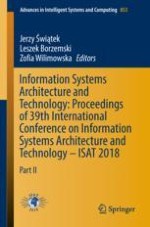This three-volume set of books highlights major advances in the development of concepts and techniques in the area of new technologies and architectures of contemporary information systems. Further, it helps readers solve specific research and analytical problems and glean useful knowledge and business value from the data. Each chapter provides an analysis of a specific technical problem, followed by a numerical analysis, simulation and implementation of the solution to the real-life problem.
Managing an organisation, especially in today’s rapidly changing circumstances, is a very complex process. Increased competition in the marketplace, especially as a result of the massive and successful entry of foreign businesses into domestic markets, changes in consumer behaviour, and broader access to new technologies and information, calls for organisational restructuring and the introduction and modification of management methods using the latest advances in science. This situation has prompted many decision-making bodies to introduce computer modelling of organisation management systems.
The three books present the peer-reviewed proceedings of the 39th International Conference “Information Systems Architecture and Technology” (ISAT), held on September 16–18, 2018 in Nysa, Poland. The conference was organised by the Computer Science and Management Systems Departments, Faculty of Computer Science and Management, Wroclaw University of Technology and Sciences and University of Applied Sciences in Nysa, Poland. The papers have been grouped into three major parts:
Part I—discusses topics including but not limited to Artificial Intelligence Methods, Knowledge Discovery and Data Mining, Big Data, Knowledge Based Management, Internet of Things, Cloud Computing and High Performance Computing, Distributed Computer Systems, Content Delivery Networks, and Service Oriented Computing.
Part II—addresses topics including but not limited to System Modelling for Control, Recognition and Decision Support, Mathematical Modelling in Computer System Design, Service Oriented Systems and Cloud Computing, and Complex Process Modelling.
Part III—focuses on topics including but not limited to Knowledge Based Management, Modelling of Financial and Investment Decisions, Modelling of Managerial Decisions, Production Systems Management and Maintenance, Risk Management, Small Business Management, and Theories and Models of Innovation.
